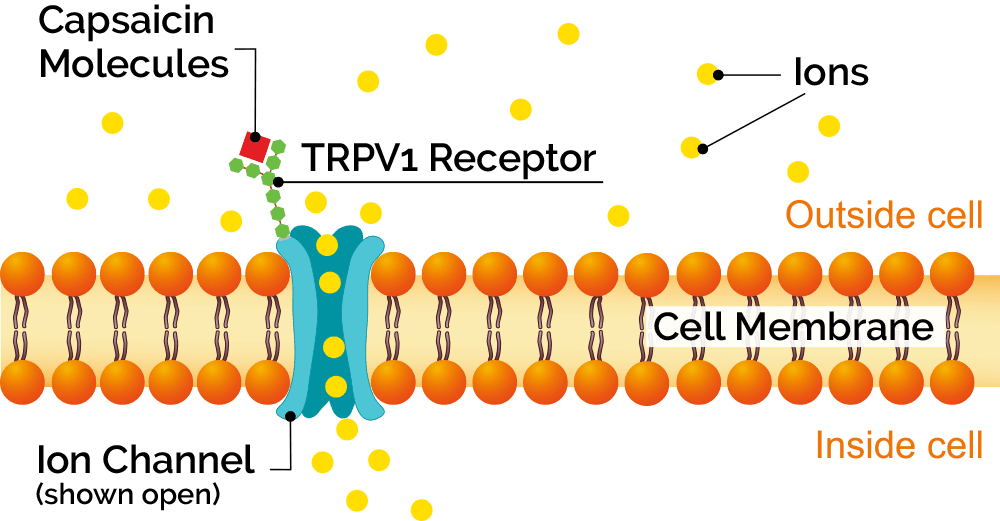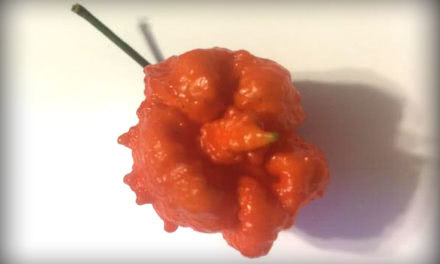Can you become more desensitized to spicy food the more you eat of it? Turns out, the answer is yes! But how?
What causes that burning pain from hot peppers?
It’s all about sending signals through your nervous system. When you accidentally touch a hot stove, messages are sent to your brain to signal “DANGER! THIS IS BAD NEWS AND WILL REALLY HURT YOU!” Pain, while unpleasant, serves an incredibly useful function – it’s a quick way for us to know that we’ve done something that we shouldn’t have. Cells have proteins called receptors that bind to molecules to get this response rolling.

What’s at work with hot peppers is a receptor that goes by the clever name of TRPV1 (pronounced TRIP-vee one), also known as the capsaicin receptor. Chief among the duties of the TRPV1 receptor is regulating body temperature. In addition, the TRPV1 receptor provides a sensation of scalding heat and pain. The TRPV1 receptor is located all over our body, not just in our mouths.
Capsaicin is a specialized combination of molecules that really knows how to aggravate TRPV1. TRPV1 is capsaicin’s only receptor. Capsaicin molecules bind to the receptor and imitates what TRPV1 normally interprets as high temperatures. It is tuned to sense a temperature of 43°C/109°F and above. As the perceived temperature rises, the feeling of burning kicks in. These receptors in our mouths and in our skin are the reason for the feeling of ‘fire’ we experience when we eat or touch spicy food.
So how do you become more desensitized to spicy food?
Now that we understand how capsaicin causes the feeling of burning, let’s see what can be done to change how we, or more specifically, how our brain perceives that heat.
Some people might be born with a higher sensitivity to spice and they experience the effects of spiciness more than those with lower sensitivity, but researchers have pointed out that a person’s spicy food-threshold is also determined by how much that person uses their TRPV1 receptors.
As the TRPV1 receptor is exposed to more and more capsaicin molecules, the ion channel starts to open less and less. If the ion channel does not open, it will not create an electrical current, and does not send that pain signal to the brain.
So people who eat spicy food their entire lives have probably done a pretty good job desensitizing the TRPV1 receptor. TRPV1 receptors can be “trained” to be desensitized to capsaicin over time and cause the person to actually perceive less burn from it. In order for desensitization to happen, the chemical element Calcium must be present. Almost every cell in our body uses calcium in some way.
The desensitization of TRPV1 is also thought to be reason capsaicin has pain-relieving effects.






